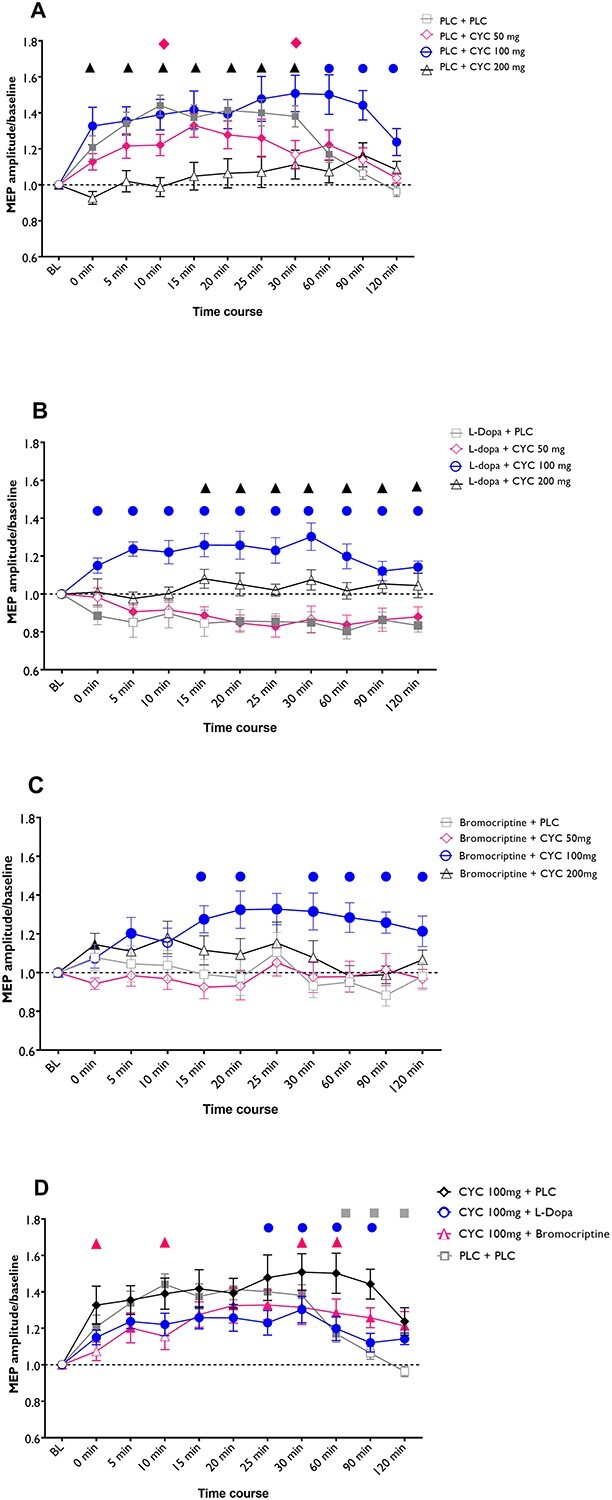Fig. 3.

Dose-dependent effect of NMDA receptor activation on dopaminergic modulation of LTP-like plasticity induced by anodal tDCS. The x-axis displays the time points (in minutes) of baseline (BL) and after measurements during the experiment. MEP amplitudes standardized to the corresponding baseline values are plotted on the y-axis. a) Low-dose CYC alone did slightly reduce anodal tDCS-generated LTP-like plasticity, while the medium dosage prolonged and high-dosage CYC diminished the aftereffects. b) L-Dopa alone and L-Dopa combined with low-dosage CYC reversed anodal tDCS-induced excitatory plasticity, which was reestablished by medium-dose CYC. Adding high-dosage CYC to L-Dopa abolished tDCS-induced aftereffects. c) Bromocriptine alone abolished anodal tDCS-generated aftereffects, and medium-dose CYC reestablished LTP-like plasticity under bromocriptine, while low- and high-dose CYC did not change the effects of bromocriptine. d) Medium-dose CYC alone resulted in a higher excitability enhancement following anodal tDCS compared with L-Dopa or bromocriptine plus medium-dose CYC. Data were extracted from Fig. 3a–c with the conditions CYC 100 mg + PLC, CYC 100 mg + bromocriptine, and CYC 100 mg + L-Dopa, respectively. Filled symbols indicate a significant difference of cortical excitability against the respective baselines. In (a–c), floating symbols indicate a significant difference between each medication combined with CYC dosages with its respective PLC condition at a given time point. In (d), the floating symbols indicate significant differences between the medium-dose CYC alone condition and the respective medium-dose CYC+ L-dopa and medium-dose CYC+ bromocriptine conditions. Error bars represent SEM.
